-
 Vitinha says PSG-Bayern Champions League clash will show who's 'best'
Vitinha says PSG-Bayern Champions League clash will show who's 'best'
-
Arsenal: The unstoppable Premier League force?

-
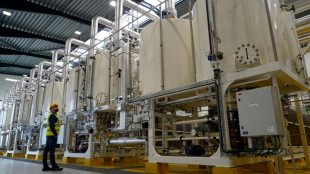 Denmark inaugurates rare low-carbon hydrogen plant
Denmark inaugurates rare low-carbon hydrogen plant
-
Springboks back Ntlabakanye call-up despite doping probe
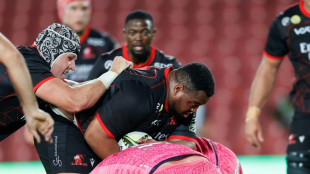
-
 German plans to lower industrial power costs from January
German plans to lower industrial power costs from January
-
Christian, Muslim Nigerians push back on threatened US strikes

-
 Nigeria's Rivers United paired with African champions Pyramids
Nigeria's Rivers United paired with African champions Pyramids
-
India women cricketers hail new era but challenges remain

-
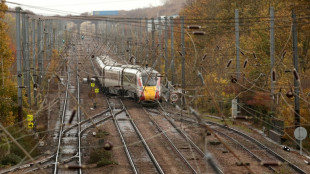 'Heroic' worker praised as man charged over UK train stabbings
'Heroic' worker praised as man charged over UK train stabbings
-
Bangladesh ex-PM Zia to contest elections: party
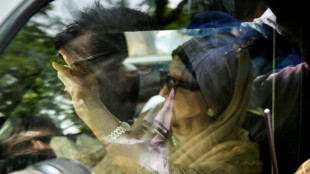
-
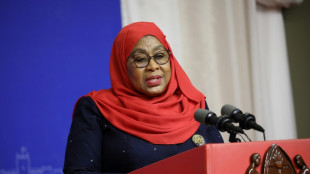 Tanzania president sworn in as opposition says hundreds killed in protests
Tanzania president sworn in as opposition says hundreds killed in protests
-
India announces $5.75 million reward for women cricket World Cup winners

-
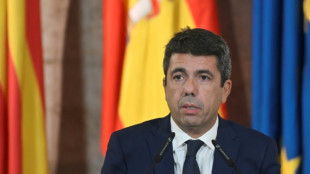 Spain regional leader resigns, a year after deadly floods
Spain regional leader resigns, a year after deadly floods
-
Video game creators fear AI could grab the controller
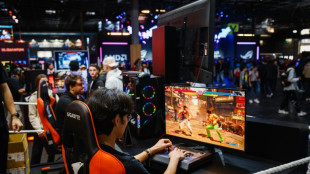
-
 France threatens Shein ban if 'childlike' sex dolls reappear
France threatens Shein ban if 'childlike' sex dolls reappear
-
International cricket returns to Faisalabad with Pakistan-South Africa ODIs
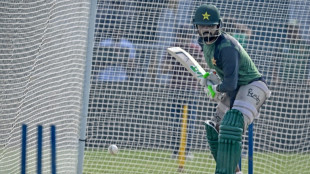
-
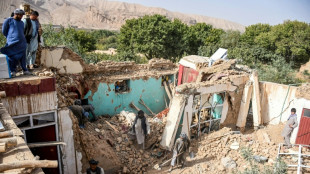 Afghan govt says quake kills 20, injures over 500
Afghan govt says quake kills 20, injures over 500
-
'We're all too rich,' says photo legend Martin Parr

-
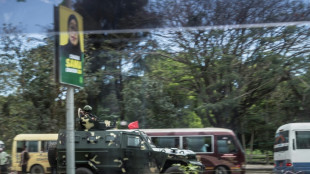 Tanzania president inaugurated as opposition says hundreds dead
Tanzania president inaugurated as opposition says hundreds dead
-
Shafali Verma: India's World Cup hero who disguised herself as boy

-
 Most equity markets rise on lingering trader optimism
Most equity markets rise on lingering trader optimism
-
Afghanistan quake kills 20, injures over 300: health ministry
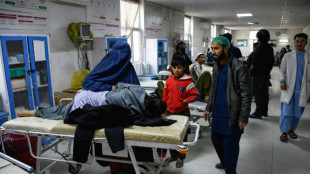
-
 India hails maiden women's World Cup cricket title as game-changer
India hails maiden women's World Cup cricket title as game-changer
-
As clock ticks down, Greece tries to clean up its act on waste
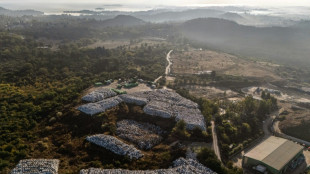
-
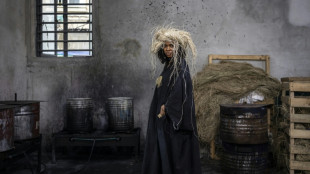 Local fabrics, fibres shine at eco-centred Lagos Fashion Week
Local fabrics, fibres shine at eco-centred Lagos Fashion Week
-
Spalletti bidding to revive Juve and reputation ahead of Sporting visit in Champions League

-
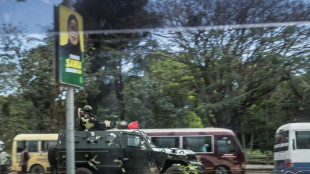 Tanzania president to be inaugurated as opposition says hundreds dead
Tanzania president to be inaugurated as opposition says hundreds dead
-
Bouanga brace as LAFC beats Austin 4-1 to advance in MLS Cup playoffs

-
 'Golden age': Japan hails Yamamoto, Ohtani after Dodgers triumph
'Golden age': Japan hails Yamamoto, Ohtani after Dodgers triumph
-
Thunder roll over Pelicans to remain NBA's lone unbeaten team

-
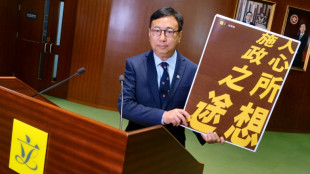 Hong Kong legislature now an 'echo chamber', four years after shake-up
Hong Kong legislature now an 'echo chamber', four years after shake-up
-
Most Asian markets rise on lingering trader optimism
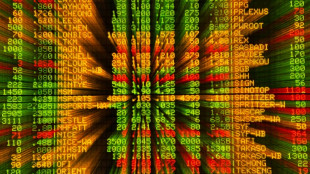
-
 Andrew to lose his last military rank: defence minister
Andrew to lose his last military rank: defence minister
-
Trump's global tariffs to face challenge before Supreme Court
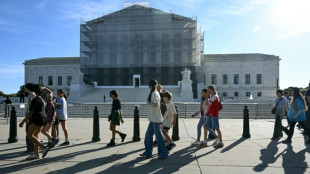
-
 Barnstorming Bayern face acid test at reigning champions PSG
Barnstorming Bayern face acid test at reigning champions PSG
-
Alonso shaping new Real Madrid on Liverpool return

-
 Half Yours favourite at Australia's 'race that stops a nation'
Half Yours favourite at Australia's 'race that stops a nation'
-
Tonga rugby league star has surgery after 'seizure' against NZ
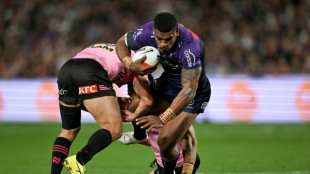
-
 Trent's return with Real Madrid reminds Liverpool of what they are missing
Trent's return with Real Madrid reminds Liverpool of what they are missing
-
Tehran toy museum brings old childhood memories to life
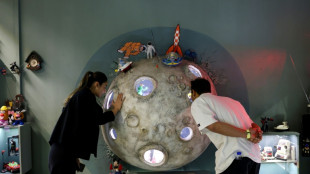
-
 Iran banking on Iraq vote to retain regional influence
Iran banking on Iraq vote to retain regional influence
-
Daughter of 'underground' pastor urges China for his release

-
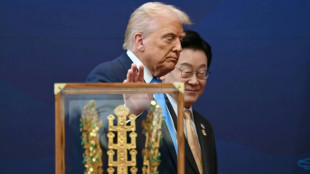 Trump the Great? President steps up power moves
Trump the Great? President steps up power moves
-
Fire ravages French monastery dubbed 'Notre-Dame of the Ardennes'

-
 Bills outlast Chiefs while NFL-best Colts fall to Steelers
Bills outlast Chiefs while NFL-best Colts fall to Steelers
-
NBA champion Thunder roll over Pelicans to remain unbeaten

-
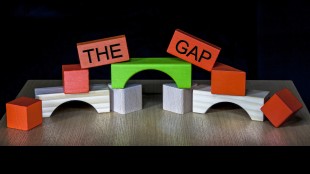 Scam Encounters Every Four Days: Mexico's Financial Toll
Scam Encounters Every Four Days: Mexico's Financial Toll
-
Eliud Kipchoge unveils plan to run 7 marathons on 7 continents

-
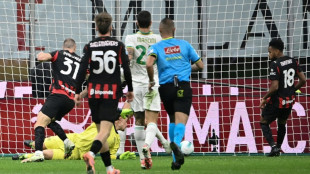 Milan deny Roma top spot in Serie A, Inter beat Verona
Milan deny Roma top spot in Serie A, Inter beat Verona
-
Lens back up to third in Ligue 1 as Lyon held at Brest

| BCC | -1.95% | 69.125 | $ | |
| CMSD | -1.54% | 23.99 | $ | |
| NGG | -1.36% | 74.28 | $ | |
| SCS | -0.79% | 15.84 | $ | |
| RBGPF | -3.95% | 76 | $ | |
| RELX | -0.57% | 43.99 | $ | |
| GSK | -0.96% | 46.42 | $ | |
| AZN | -0.49% | 82 | $ | |
| RIO | -1.85% | 70.46 | $ | |
| JRI | -0.36% | 13.84 | $ | |
| BCE | -1.98% | 22.425 | $ | |
| BTI | 1.38% | 51.91 | $ | |
| VOD | -5.1% | 11.465 | $ | |
| RYCEF | -1.98% | 15.15 | $ | |
| BP | -0.48% | 34.956 | $ | |
| CMSC | -0.34% | 23.67 | $ |
Taiwan: Is the "Silicon Shield" collapsing?
Taiwan, long regarded as a linchpin in the global technology supply chain, faces an uncertain future as its vaunted “silicon shield”—the notion that its dominance in semiconductor production deters aggression—comes under strain. The island’s strategic importance, driven by the Taiwan Semiconductor Manufacturing Company (TSMC), which produces over 90% of the world’s most advanced microchips, has historically offered a degree of protection against threats, notably from China. However, recent policies from United States President Donald Trump are raising fears that this shield may be crumbling, leaving Taiwan vulnerable at a time of escalating geopolitical tension.
The Silicon Shield: A Fragile Bastion
The concept of the silicon shield posits that Taiwan’s indispensable role in supplying cutting-edge semiconductors to the world—powering everything from smartphones to artificial intelligence—acts as a deterrent against military action, particularly from Beijing, which claims the island as part of its territory. The theory rests on the catastrophic economic fallout that would follow any disruption to TSMC’s operations, a scenario that would cripple global supply chains and affect major economies, including the U.S. and China itself. For years, this economic leverage has been Taiwan’s unspoken safeguard, complementing its military defences and U.S. support under the Taiwan Relations Act.
Yet, this shield is not impervious. China’s growing military assertiveness—demonstrated by large-scale drills encircling Taiwan in October 2024—and its advancements in domestic chip production have already cast doubt on the shield’s durability. Now, Trump’s aggressive economic strategy is adding a new layer of jeopardy, threatening to erode Taiwan’s technological edge and, with it, the island’s strategic security.
Trump’s Tariff Threat:
Since reclaiming the presidency, Trump has doubled down on his “America First” agenda, targeting Taiwan’s semiconductor industry with a bold and controversial plan. In a speech to Republicans on 27 January 2025, he proposed tariffs of up to 100% on imported microchips, arguing that Taiwan had “stolen” America’s chip industry and that such measures would force production back to U.S. soil. “They won’t want to pay a 25%, 50%, or even 100% tax,” Trump declared, framing the policy as a means to revitalise American manufacturing.
This stance marks a sharp departure from his first term, during which he bolstered Taiwan through arms sales and diplomatic engagement, including a historic call with then-President Tsai Ing-wen in 2016. Now, his rhetoric portrays Taiwan less as an ally and more as an economic rival. His administration has also questioned the $6.6 billion in grants awarded to TSMC under the 2022 CHIPS and Science Act for a factory in Arizona, with Trump dismissing it as a “ridiculous programme.” Such moves signal a transactional approach, echoing his earlier demands that Taiwan “pay” for U.S. defence support.
Economic and Strategic Fallout:
The implications of Trump’s plan are profound. For Taiwan, tariffs would not only raise costs for U.S. importers—likely passed on to consumers—but also jeopardise TSMC’s investments in American facilities, which now total $65 billion. Taiwanese Premier Cho Jung-tai has vowed to maintain the island’s tech leadership, announcing on 28 January 2025 that the government would explore “cooperative plans and assistance programmes” to shield its industry. Economy Minister Kuo Jyh-huei, meanwhile, downplayed the immediate impact, citing Taiwan’s technological superiority, though analysts warn that prolonged pressure could force TSMC to shift more production overseas, diluting Taiwan’s economic leverage.
Strategically, this shift could weaken the silicon shield’s second layer: the reliance of third parties, particularly the U.S., on Taiwanese chips. If Trump succeeds in relocating significant semiconductor production, Taiwan’s role as a global chokepoint diminishes, potentially reducing the incentive for Washington to defend the island. This fear is compounded by Trump’s ambiguous stance on Taiwan’s defence, having dodged questions in 2024 about whether he would intervene if China attacked, instead noting the island’s distance—9,500 miles from the U.S. versus 68 miles from China.
China’s Opportunistic Gaze:
Beijing, which has never renounced the use of force to achieve unification, may see an opening. While China relies heavily on TSMC—despite progress with firms like SMIC—some analysts argue that Taiwan’s chip prowess is less a shield and more a prize, incentivising control over the industry. Trump’s policies could accelerate this calculus. Posts on X suggest a growing sentiment that his approach might “incentivise Taiwan to capitulate” by undermining its economic defences, though such views remain speculative.
Taiwanese officials remain defiant. The foreign ministry, responding to Trump’s tariff threats, reiterated on 28 January 2025 that the Republic of China is a “sovereign and independent country,” dismissing any distortion of its status. President Lai Ching-te, who has stressed the “solid as a rock” U.S.-Taiwan partnership, faces the challenge of bolstering defences—currently budgeted at 2.45% of GDP—while navigating this economic onslaught.
A Shield at Risk:
Taiwan’s silicon shield has never been a guarantee, but Trump’s plan introduces unprecedented pressure. By targeting the island’s economic lifeline, he risks not only disrupting global tech supply chains but also weakening a key deterrent against Chinese aggression. For Taipei, the task is clear yet daunting: reinforce its technological edge, deepen international ties, and prepare for a world where its shield may no longer hold. As the U.S. pivots inward, Taiwan stands at a crossroads, its fate hanging in the balance between economic might and geopolitical reality.

Gaza on the cusp of civil war

Israel: Economy on the edge

Why Russia can’t end war

Rare Earth Standoff

Tanks in Gaza - Hopes dim?

Poland trusts only hard Power

Cuba's hunger Crisis deepens

How Swiss Stocks tamed Prices

Russia's Drone ploy in Poland

Why Nepal is burning

Milei suffers crushing Defeat




